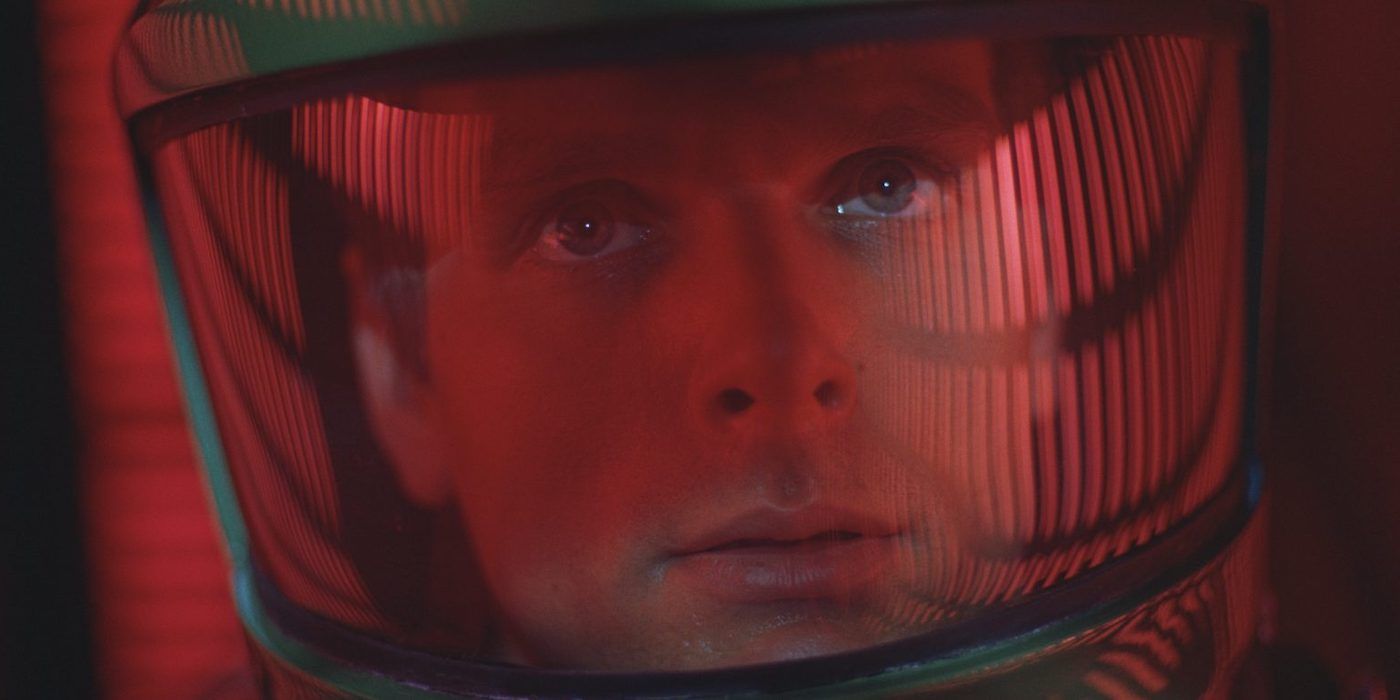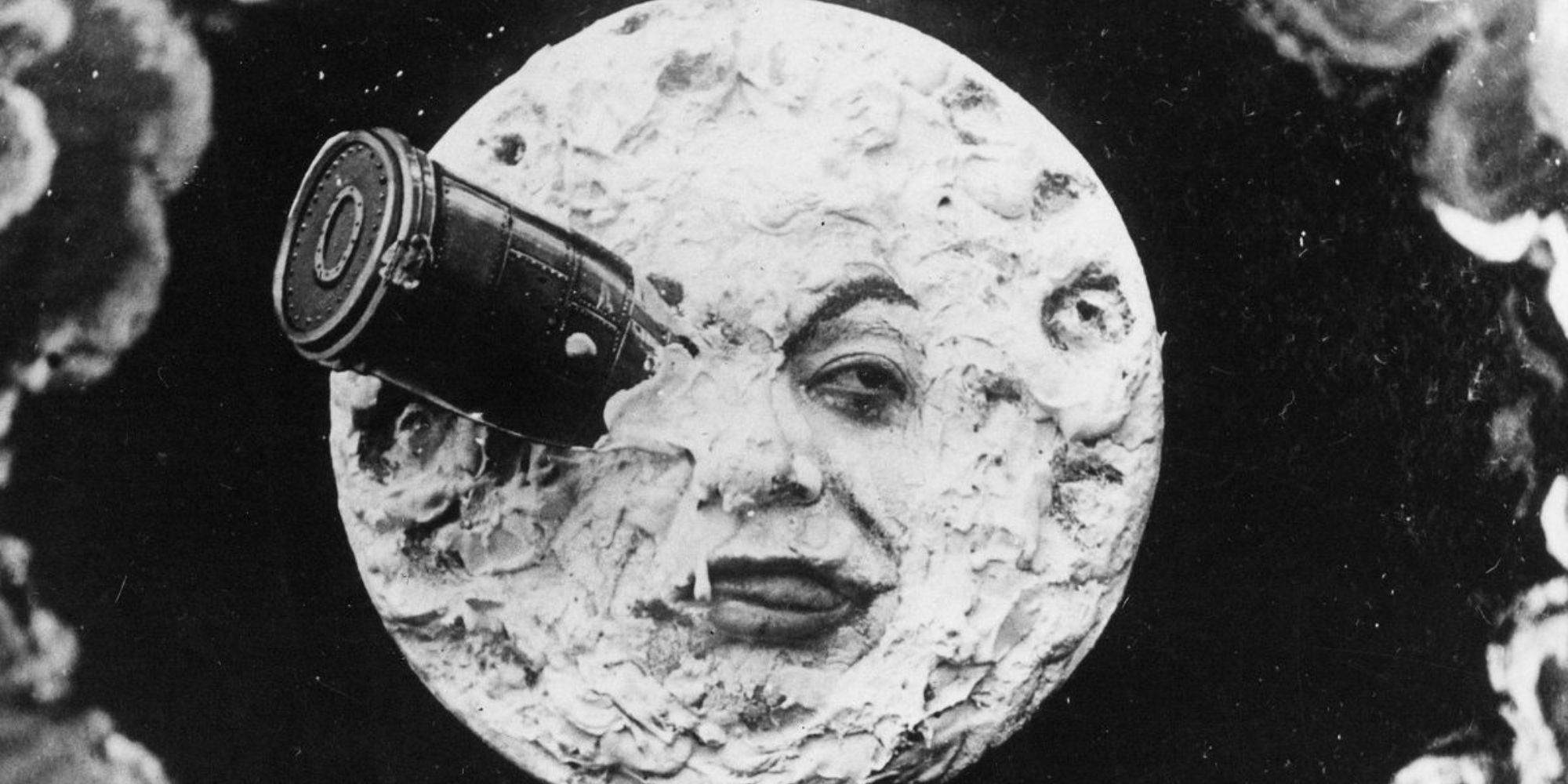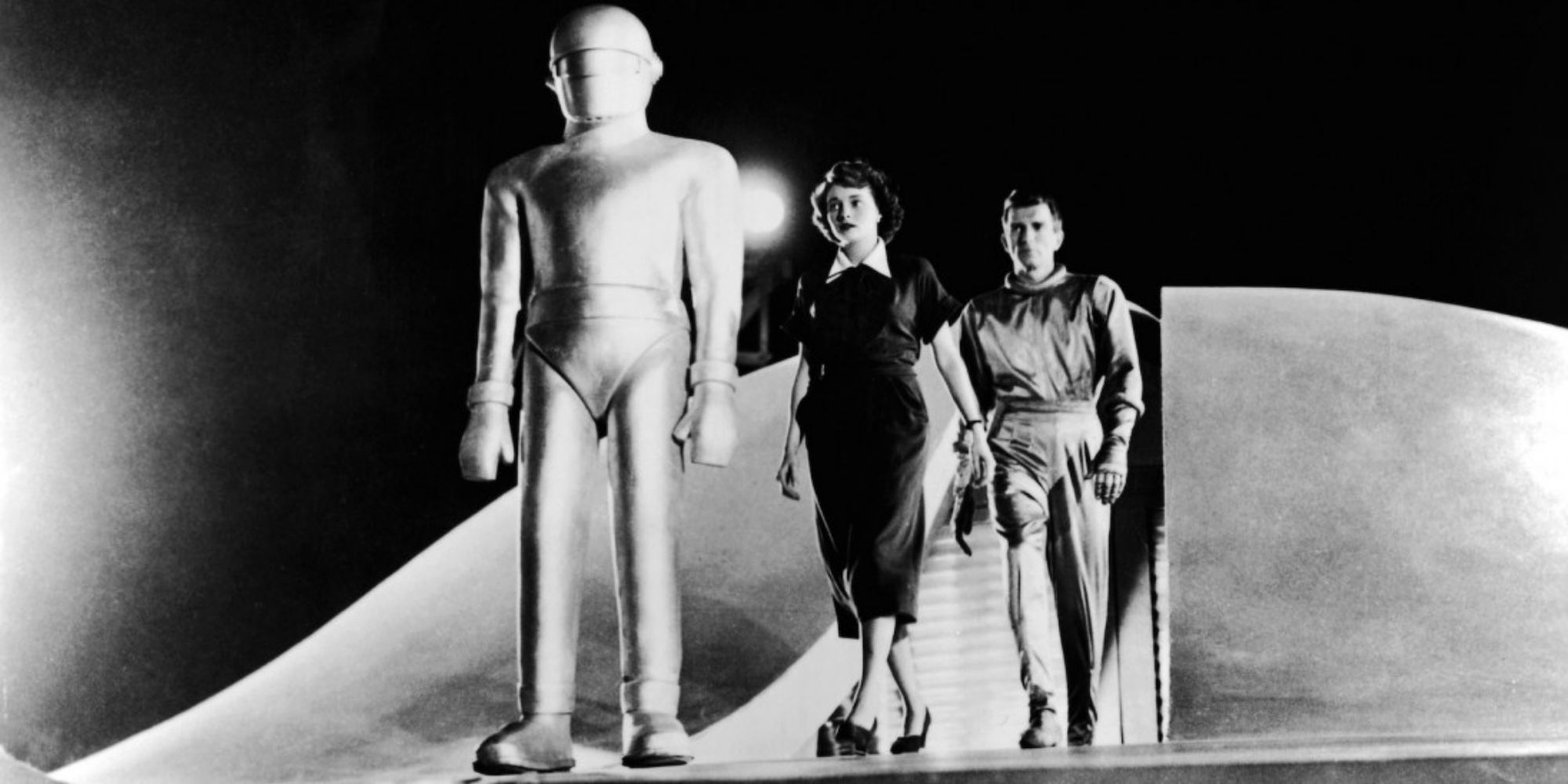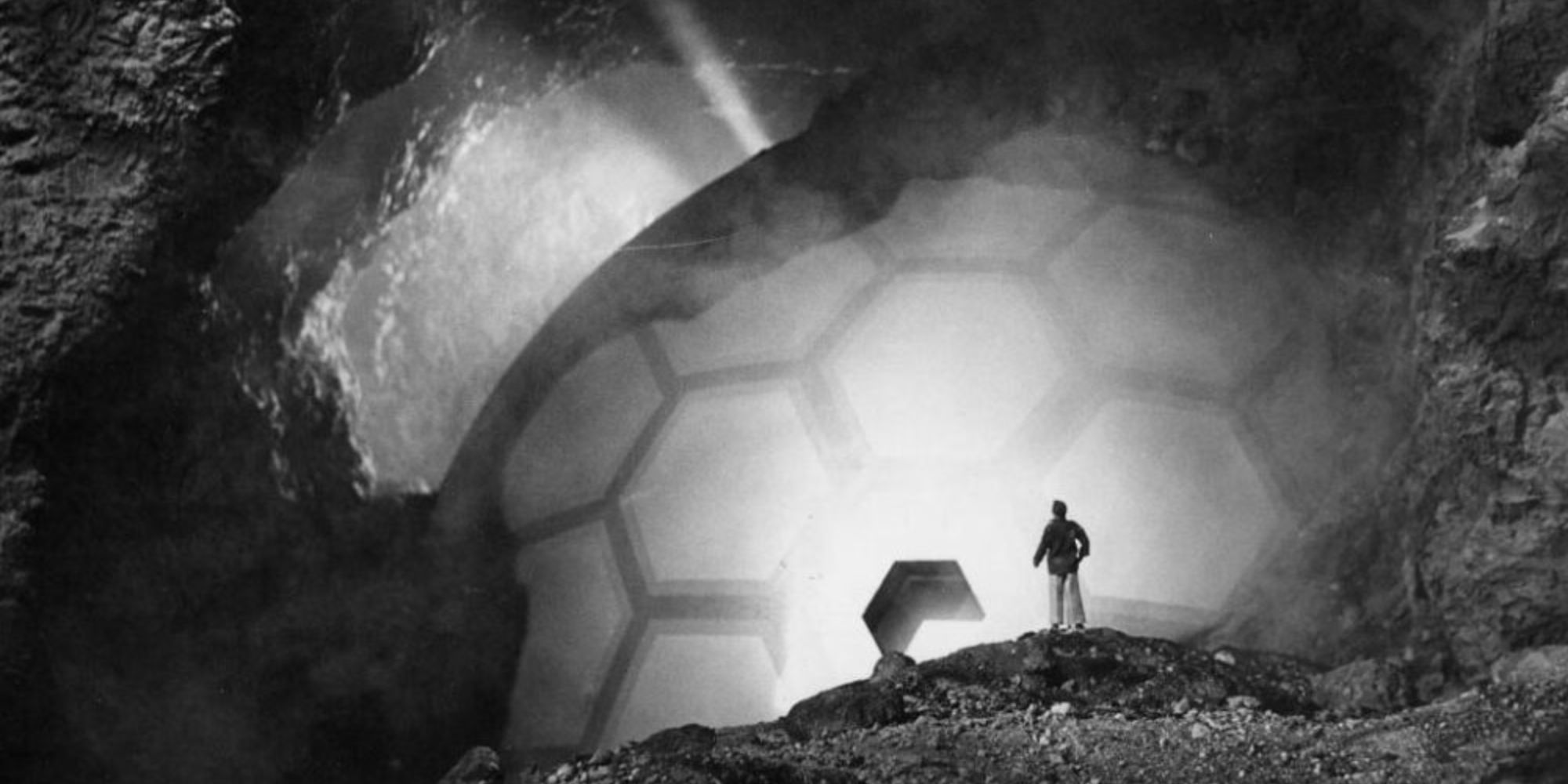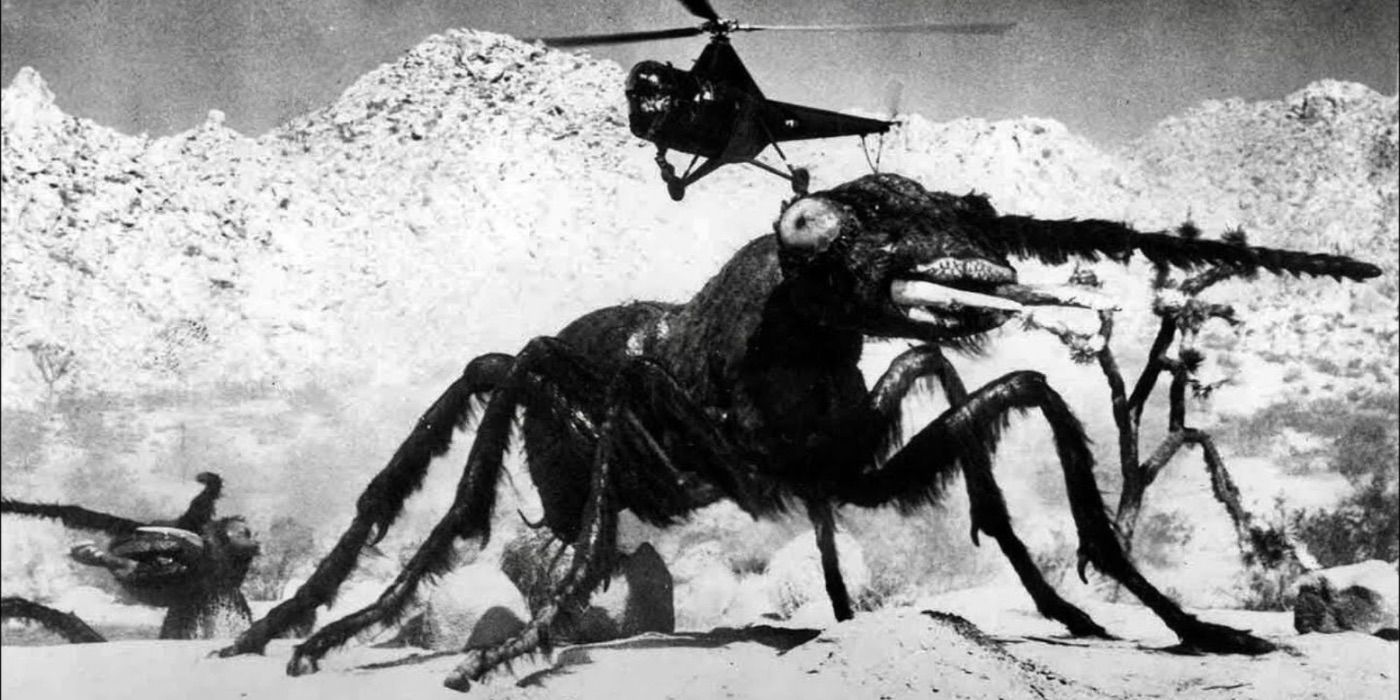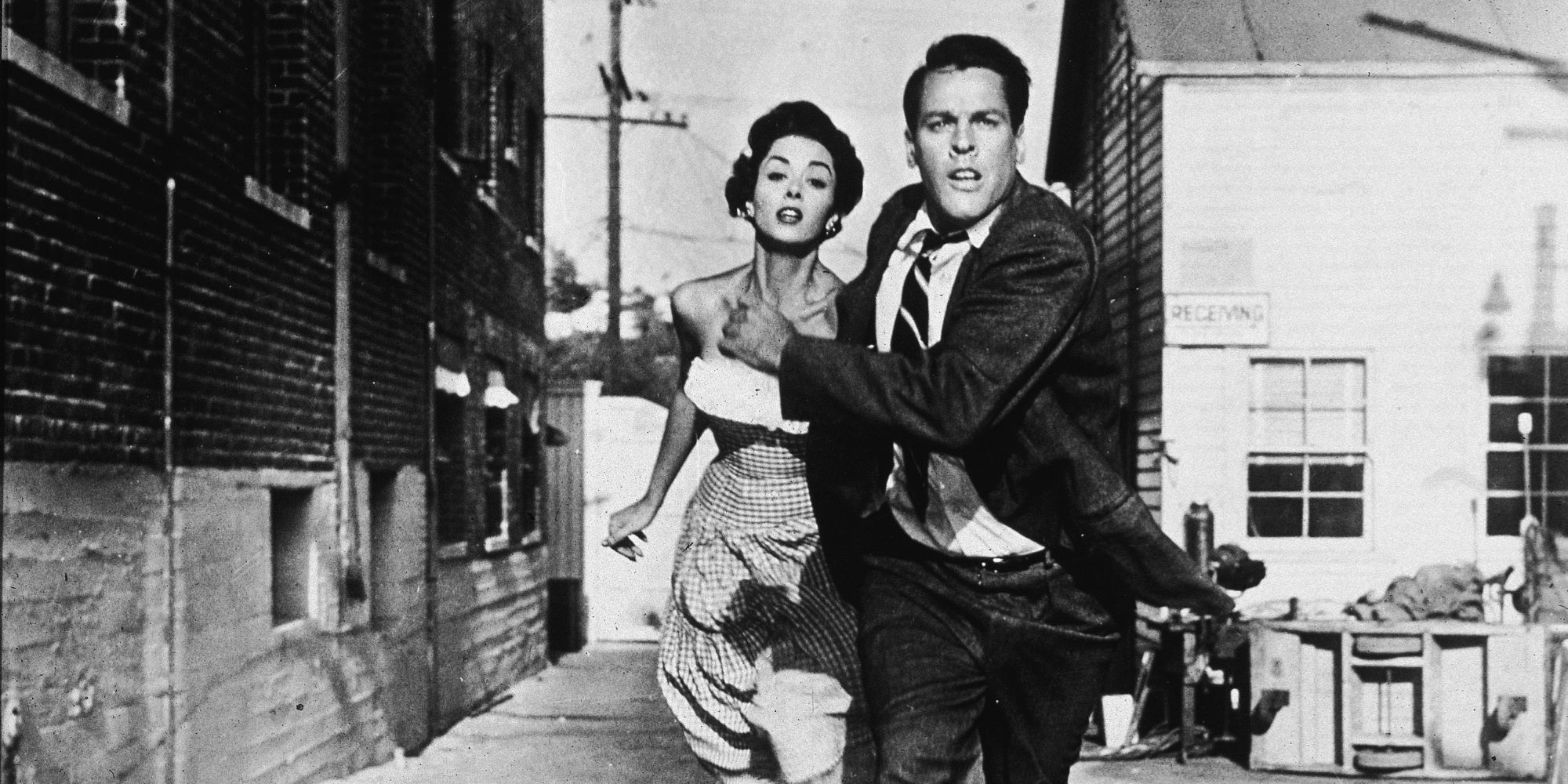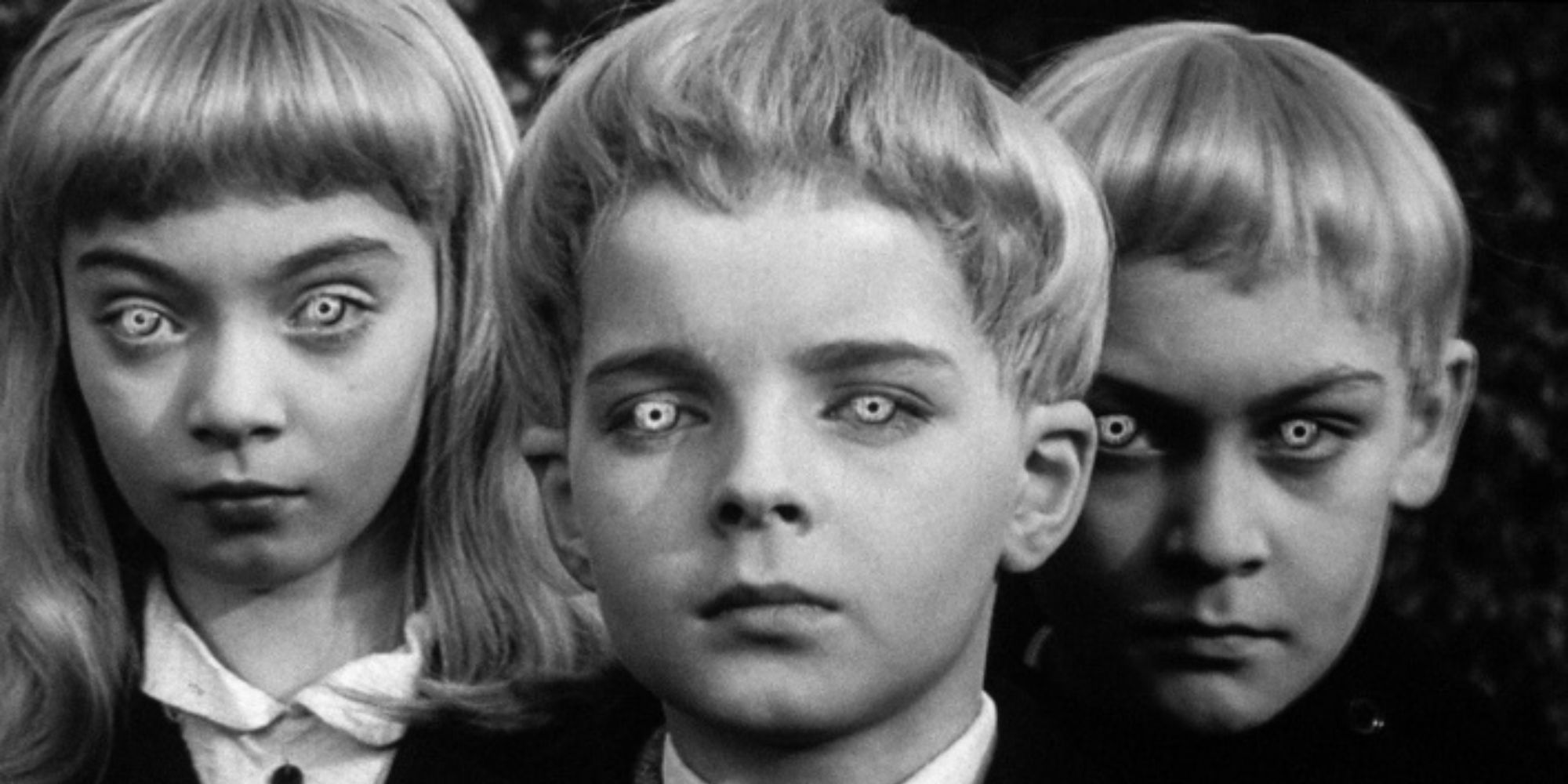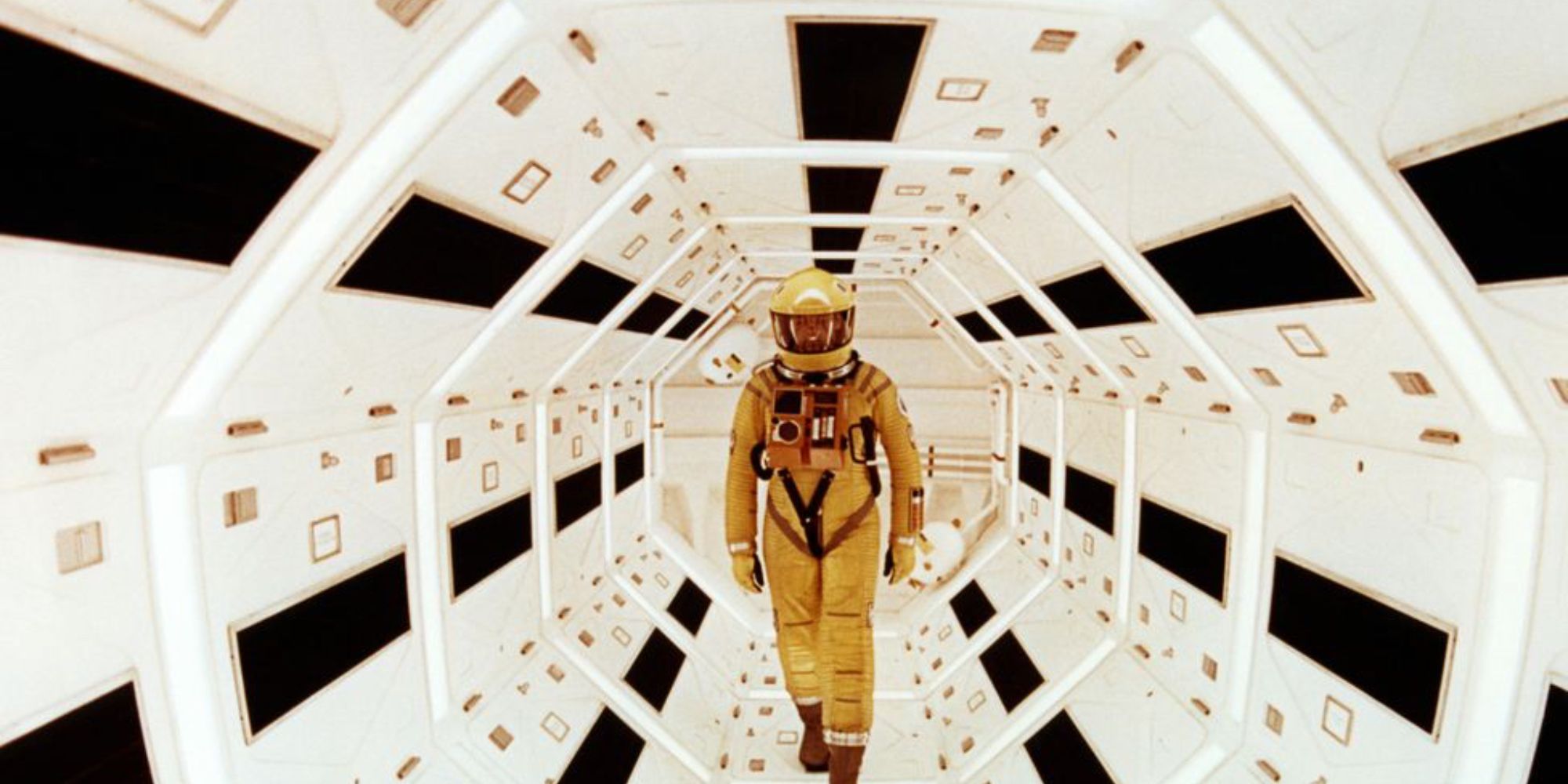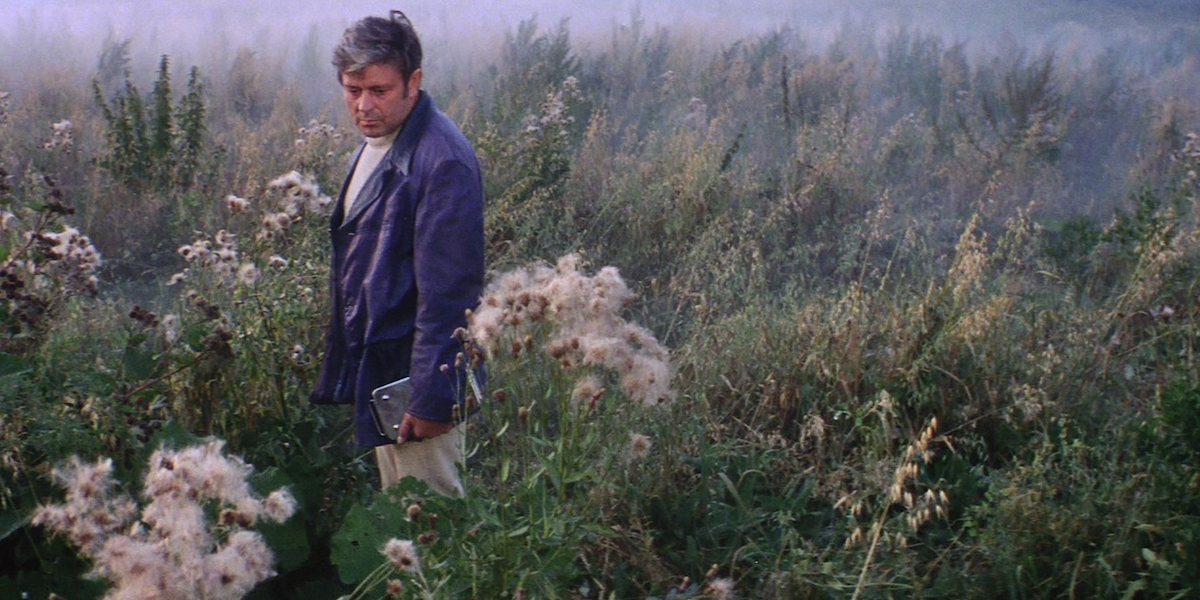These days science fiction dominates the big screen with blockbuster franchises like Star Wars, Avatar, and arguably the MCU. The directors and producers of these films grew up watching classic sci-fi films from the '50s, '60s, and even earlier: these films featured great stories, interesting characters, and (at the time) cutting-edge filming techniques and effects.
Star Wars is considered a benchmark of sorts for the genre, but even the greats have their predecessors. The films that came before it not only likely shaped the imagination of those behind A New Hope but also went on to change the medium forever.
'A Trip to The Moon' (1902)
One of the oldest motion pictures ever, Georges Méliès' A Trip to The Moon, was made in 1902. It is extremely influential by being the first sci-fi film ever made. Up to 18 minutes long (depending on the chosen frame rate), this silent and hand-colored film is also one of the first films—if not the very first—to tell a genuine story. Méliès not only directed the film but played the lead as well.
For modern viewers, Martin Scorsese's Hugo is a must-watch companion piece. It's not only an excellent film in its own right but also is a wonderful, if slightly fantastic, retelling of the life of Georges Méliès.
'The Thing From Another World' (1951)
The Thing From Another World, set in a scientific outpost near the North Pole, is an excellent example of a film where protagonists are trapped in a confined space with little hope of rescue or escape. The station is the perfect hunting ground for an alien intent on consuming its human inhabitants.
While not as true to its source material (a novella by John W. Campbell) as John Carpenter's even more terrifying and visceral The Thing (1982), it succeeds as both science fiction and horror, using its great setting, good actors and whip-smart dialogue to still impress—and terrify—audiences seventy years later. It's not hard to draw a direct line between this film and later productions such as Alien and Predator.
'The Day The Earth Stood Still' (1951)
A warning against the threat of nuclear war, The Day The Earth Stood Still was almost unique for movies of the period in having an alien not remotely interested in conquering or destroying the Earth, but rather warning humanity it could be destroyed if it doesn't turn from its destructive ways.
Together with films like Them!, The Day The Earth Stood Still shows society's concern about the possibility of nuclear war destroying civilization, a theme in many science fiction films since, such as 1959's On The Beach and 1968's Planet of The Apes.
'The War of The Worlds' (1953)
The destruction of civilization had never before looked so good on the screen. Arguably featuring the best special effects in a sci-fi film until 2001: A Space Odyssey, The War of the Worlds also holds its own as a rousing adventure. Furthermore, it has the first genuinely convincing glimpse of a truly "alien" looking alien.
The best of the alien invasion films until Invasion of the Body Snatchers, it was also one of the best translations of film of H. G. Wells' story of the same name. The film's ambition and scope still influence filmmakers today, perhaps best demonstrated in Steven Spielberg's own version: 2005's War of the Worlds.
'It Came From Outer Space' (1953)
Based on a Ray Bradbury screen treatment, It Came From Outer Space was Universal's first 3D movie. The film features aliens who accidentally come to Earth because of damage to their spaceship. They take on human form to help them get the equipment and parts they need to repair their ship.
This is another instance where the aliens are basically nonviolent: if not exactly benign, then largely disinterested in humanity. By showing what it's like trying to survive and escape from a world where being the "other" makes you subject to suspicion, fear, and ultimately violence, It Came From Outer Space prefigured films like Steven Spielberg's Close Encounters of the Third Kind and John Carpenter's Starman.
'Them!' (1954)
To say Them! is a film about giant ants is like saying Dune is a film about sand. From the eerie beginning when a little girl is discovered lost in the desert through to the climactic battle between giant, irradiated ants and the US army in the vast Los Angeles storm drains (a scene stylistically reprised in 1986's Aliens when the creatures scramble along the ceiling to get at the surviving humans), this film grabs you and never lets go.
Clever writing, taut direction, and great sound effects kept the original audience on the edge of its collective seat for the entire film. One of the first, and arguably the best, of the many giant animal films made over the next twenty years, it's now rightly regarded as a classic of sci-fi cinema.
'Invasion of The Body Snatchers' (1956)
Depending on who you as Invasion of the Body Snatchers was either an allegory for the dangers of Communism or the dangers of McCarthyism. Ultimately, this atmospheric and terrifying story about people being replaced by emotionless alien simulacrums is now regarded as one of the best sci-fi films ever made.
A similar idea was used in Nigel Kneale's equally terrifying 1955 television series The Quatermass Xperiment. Exploring what it means to be human has become a recurring theme in sci-fi cinema, as seen in 1982's Blade Runner and 1999's The Matrix.
'The Village of The Damned' (1960)
The first film made from John Wyndham's The Midwich Cuckoos, The Village of the Damned, is the perfect example of what British writer Brian Aldiss disparagingly called "cosy catastrophes." But it's the film's coziness, the familiar British village inhabited by familiar British characters, that make this the perfect sci-fi example of cosmic horror as parents realize their children are in fact, not their children at all, but emotionless and amoral aliens: the parents have been used the same way cuckoos will use the nests of other birds to lay their eggs. It is the familiar made horrifyingly unfamiliar and threatening.
What makes these aliens even more insidious than those in Invasion of The Body Snatchers is that they are children, changelings, reaching deep into the viewers' own atavistic fears of losing the next generation, a theme repeated in 2006's Children of Men.
'2001: A Space Odyssey' (1968)
An alien contact story without an alien, this 1968 film demonstrated how powerful science fiction could be in the hands of a master director like Stanley Kubrick, collaborating with one of science fiction's great authors, Arthur C. Clarke, and given a proper budget to work with. 2001: A Space Odyssey set the benchmark for special effects until George Lucas' Star Wars came along in 1977.
Starting with the story of how an alien artifact in the Pleistocene sets a small group of primates on the first steps of becoming Homo sapiens, the film moves at a graceful pace until astronaut David Bowman (Keir Dullea) has to deal with HAL 9000 (voiced by Douglas Rain), a corrupted AI that runs the spaceship Discovery One, and then with the help of unseen aliens transitions into a strange, fetal, post-human existence. 2001 is a film that deals with big, expansive ideas about the human condition in a big, expansive way.
'Solaris' (1972)
As in 2001, Andrei Tarkovsky's Solaris uses contact with a mysterious alien presence to explore what it means to be human. In this case, the alien is the planet Solaris itself, which creates "visitors" from the memories of an orbiting space station's scientists. A psychologist, Kelvin (portrayed by Donatas Banionis, voiced by Vladimir Zamansky), is sent to the station to find out what's going on but is soon under its spell. After spending a night at the station, he wakes to see his dead wife in his cabin.
While Solaris deals with how love and grief shape can shape our lives, it also gives us a glimpse into a truly indefinable alien intelligence, allowing Tarkovsky to explore themes alienness and alienation. Modern movies that follow similar lines of philosophical questioning include 2014's Ex Machina, 2016's Arrival, and 2018's Annihilation.

